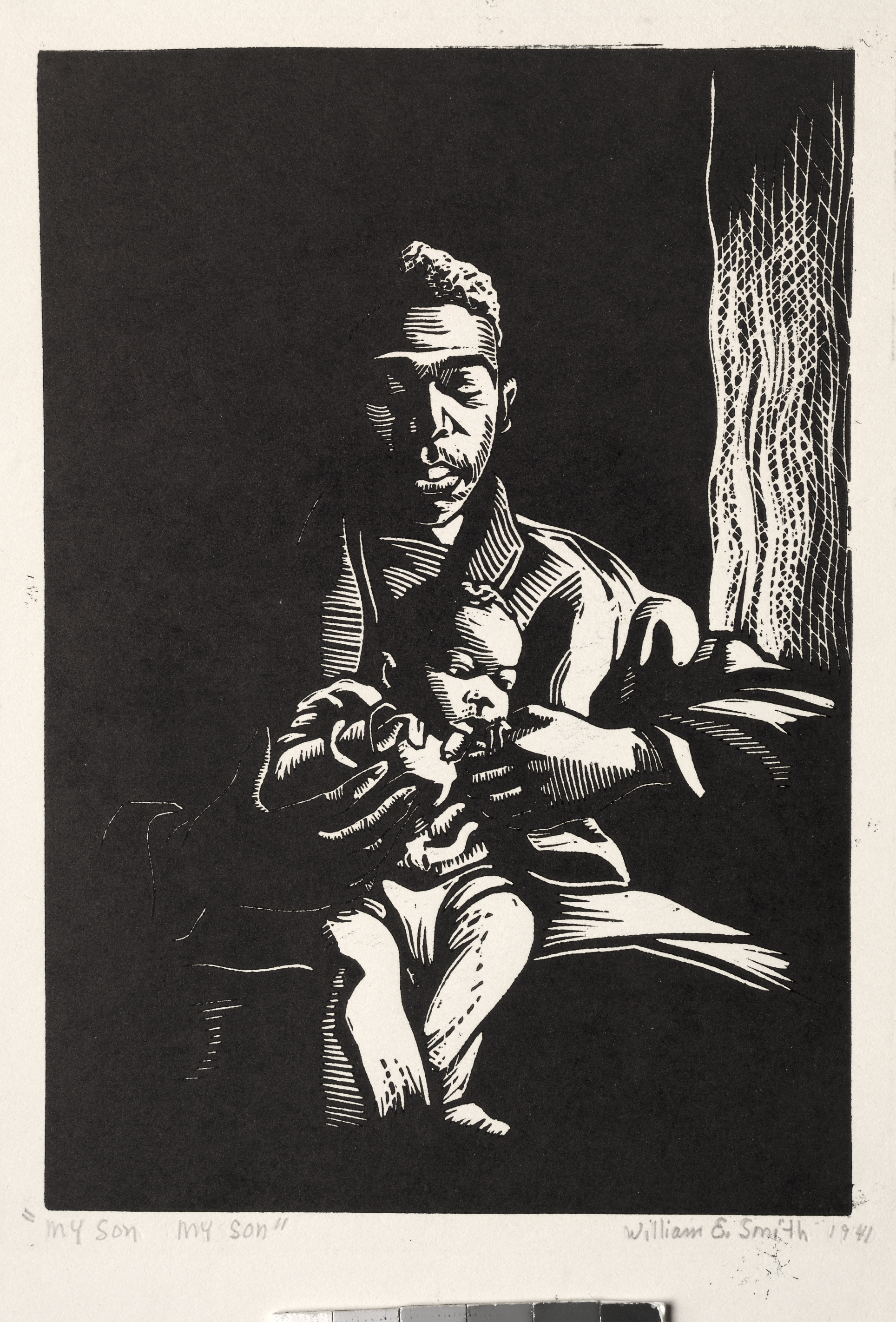“Peripheral Prints: Karamu House and the Rise of African American Art in the Midwest”
Established in 1915 in Cleveland, Karamu House is one of the earliest and most important Black community and performing arts centers in the United States. Although it is widely recognized for its contribution to African American theater, very little attention has been paid to the role of the Karamu House Graphic Arts Workshop in the Black Arts Movement.
Marginalized by its geographic location in the rustbelt, Karamu House has been neglected as a site of meaningful visual arts activity, and as a hub for Black artist-printmakers from c. 1940 to the present.
The relief prints of Charles Sallée, William E. Smith, and Hughie Lee Smith document the earliest, 1940s phase of the Karamu shop and signal the convergence of their democratic ideals with those of the Cleveland WPA. Even more significantly, these prints and the workings of the Karamu print shop, market, and gallery, offer under-studied evidence of what was by the 1970s, the most important destination for Black artists traveling across the United States.
The Karamu House archives—now dispersed among several Cleveland institutions—quietly telegraph the impact of the Graphic Arts Workshop, where Romare Bearden, Jacob Lawrence, Nelson Stevens, Curlee Raven Holton and a host of other prominent Black artist-printmakers visited, taught, worked, or exhibited their prints.
While the Karamu print shop has long since dissolved, I argue that the prints themselves archive its historic place as a center for Black art-making, and index the complex, and often overlooked, development of a Black art market in the Midwest.


My Son, My Son image with caption William E. Smith, My Son! My Son!, 1941. Linoleum cut on paper. Cleveland Museum of Art; Gift of The Print Club of Cleveland